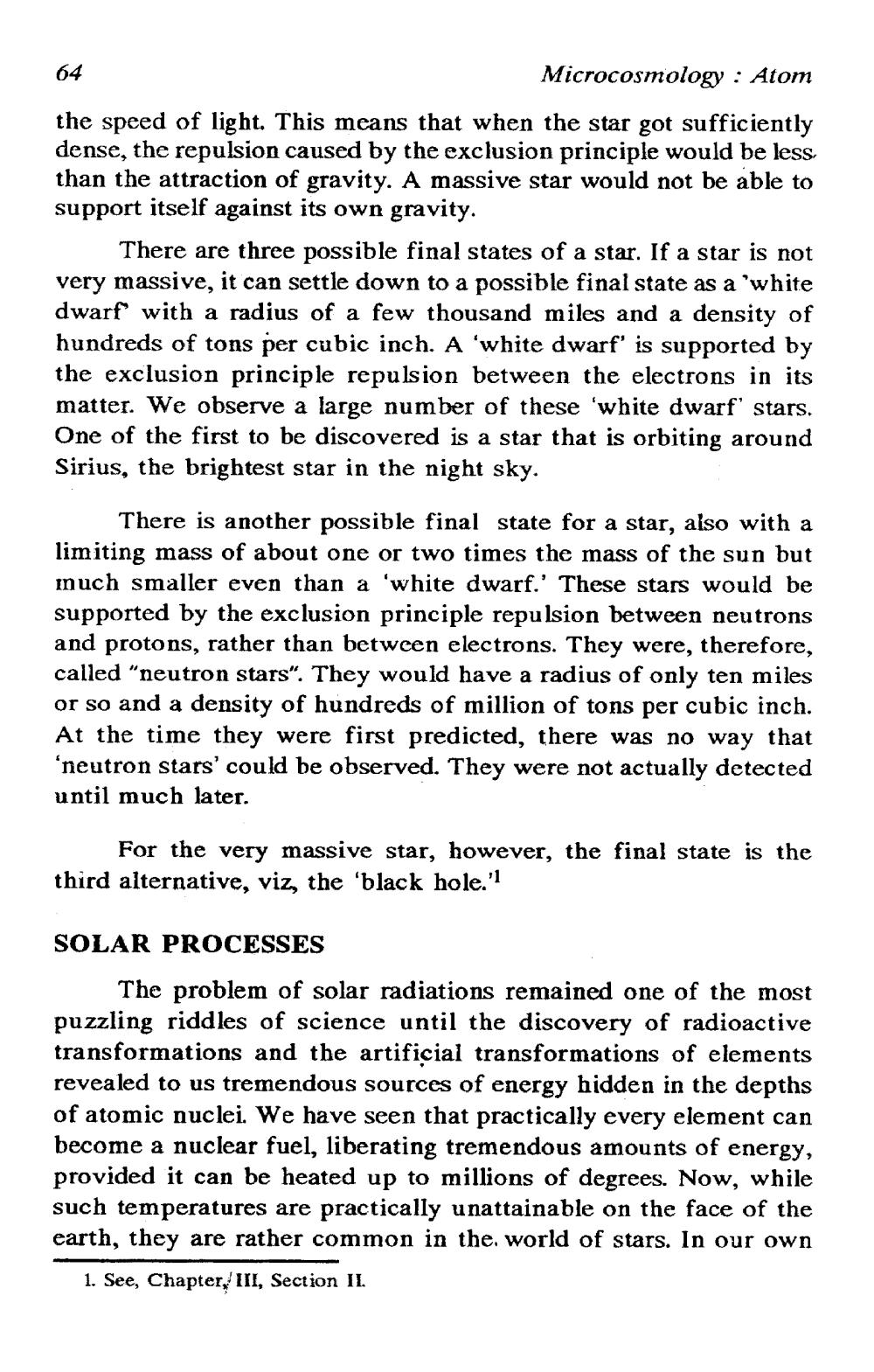________________
64
Microcosmology: Atom
the speed of light. This means that when the star got sufficiently dense, the repulsion caused by the exclusion principle would be less than the attraction of gravity. A massive star would not be able to support itself against its own gravity.
There are three possible final states of a star. If a star is not very massive, it can settle down to a possible final state as a 'white dwarf with a radius of a few thousand miles and a density of hundreds of tons per cubic inch. A 'white dwarf' is supported by the exclusion principle repulsion between the electrons in its matter. We observe a large number of these 'white dwarf' stars. One of the first to be discovered is a star that is orbiting around Sirius, the brightest star in the night sky.
There is another possible final state for a star, also with a limiting mass of about one or two times the mass of the sun but much smaller even than a 'white dwarf.' These stars would be supported by the exclusion principle repulsion between neutrons and protons, rather than between electrons. They were, therefore, called "neutron stars". They would have a radius of only ten miles or so and a density of hundreds of million of tons per cubic inch. At the time they were first predicted, there was no way that 'neutron stars' could be observed. They were not actually detected until much later.
For the very massive star, however, the final state is the third alternative, viz, the 'black hole.'1
SOLAR PROCESSES
The problem of solar radiations remained one of the most puzzling riddles of science until the discovery of radioactive transformations and the artificial transformations of elements revealed to us tremendous sources of energy hidden in the depths of atomic nuclei. We have seen that practically every element can become a nuclear fuel, liberating tremendous amounts of energy, provided it can be heated up to millions of degrees. Now, while such temperatures are practically unattainable on the face of the earth, they are rather common in the world of stars. In our own
1. See, Chapter, III, Section II




